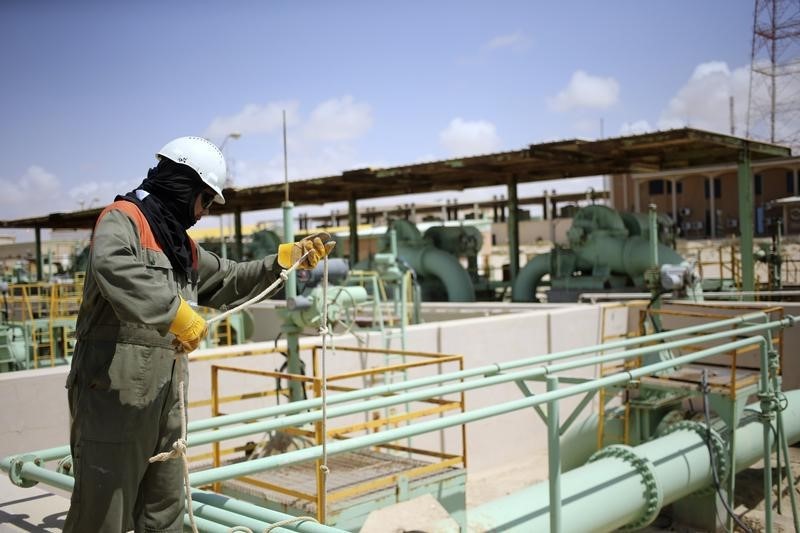© Reuters. FILE PHOTO: Oil rig pumpjacks, also known as thirsty birds, extract crude from the Wilmington Field oil deposits area near Long Beach, California July 30, 2013. REUTERS/David McNew//File Photo
SINGAPORE (Reuters) – Oil prices edged down early on Tuesday after gaining in the previous trading session, due in part to the prospect of rising supply from Russia as well as the possibility of slower-than-expected downstream demand in sectors such as jet fuel.
The futures contract for May delivery slipped 16 cents to $86.73 a barrel as at 0300 GMT, whereas that for U.S. West Texas Intermediate (WTI) fell 13 cents to $82.03. The WTI April contract, with expires tomorrow, fell 16 cents to $82.56.
Both benchmarks reached four-month highs in the previous session, buoyed by lower crude exports from Saudi Arabia and Iraq and signs of stronger demand and economic growth in China and the U.S.
Regarding Russia, supply concern stemming from increased exports following Ukrainian attacks on the country’s oil infrastructure continued to pressure prices downward.
“Attacks will likely reduce Russian crude runs by up to 300 kbd (thousand barrels per day), in addition to scheduled maintenance closures… Lower primary runs, however, would lead to higher exports, helping Russia to simultaneously achieve output cuts while keeping exports flat,” JP Morgan analysts wrote in a client note.
Russia will increase oil exports through its western ports in March by almost 200,000 barrels per day (bpd) against a monthly plan for 2.15 million bpd, while on a daily basis, shipments will increase by 10% compared to its initial plan for March, Reuters calculations showed.
Meanwhile, five sessions of gain in the U.S. dollar also kept a lid on oil’s uptrend, with the greenback almost at a two-week high against major peers.
A stronger dollar typically makes buying oil more expensive for holders of other currencies.
On the demand side, analysts were slightly cautious on demand growth coming from the jet fuel sector ahead of the summer travelling season in the third quarter of the year.
Global jet fuel prices are likely to be “higher by 5.4% over our previous forecast to USD111/bbl as soft demand is expected to give way to peak summer travel and stronger prices”, BMI analysts wrote in a client note.
“However, a global economic slowdown will temper consumption of air travel and weigh on jet fuel prices limiting price upside,” they added.
Read the full article here

